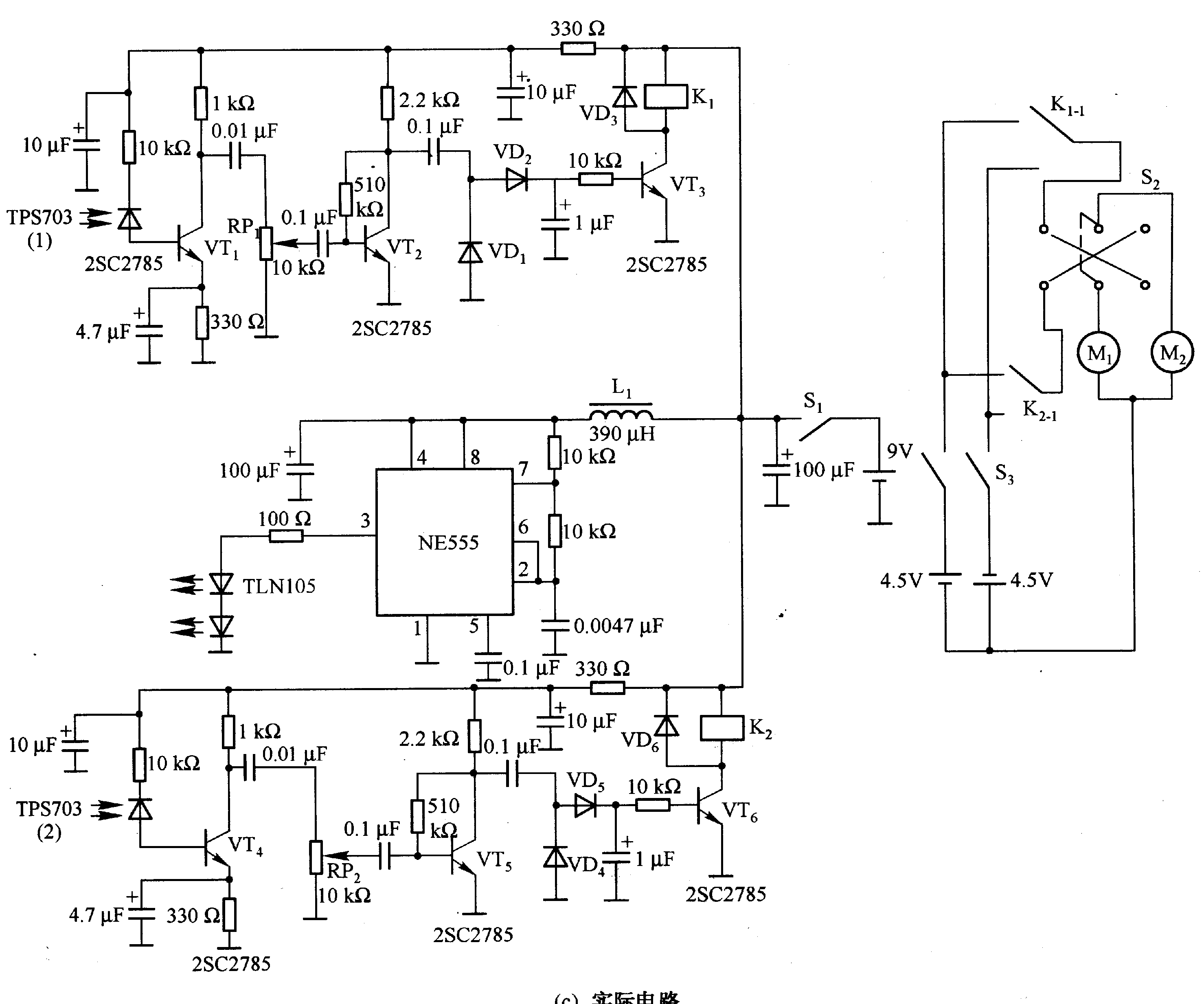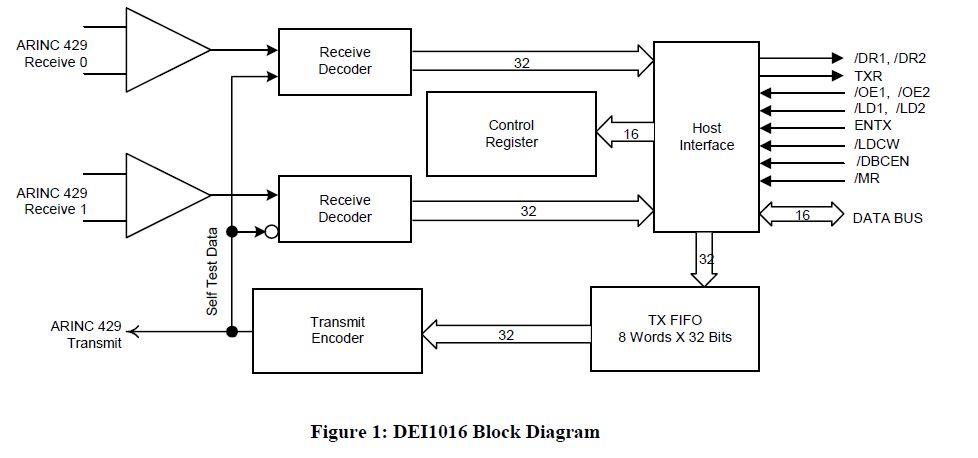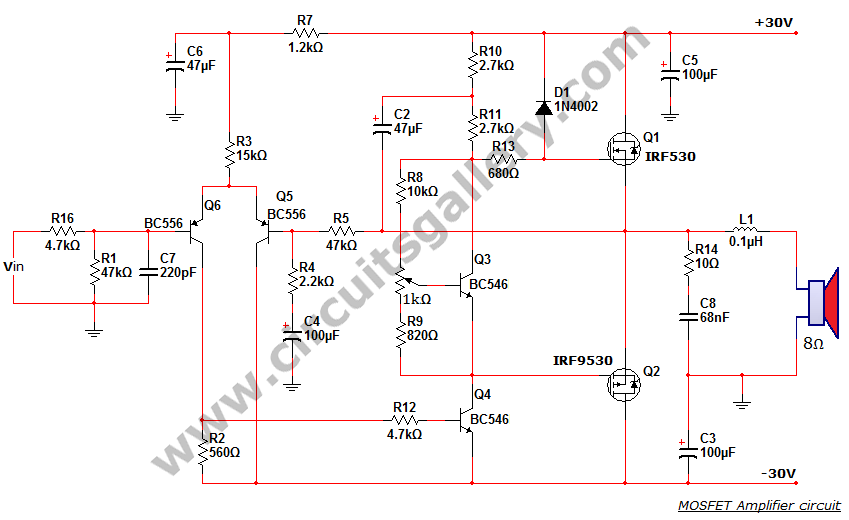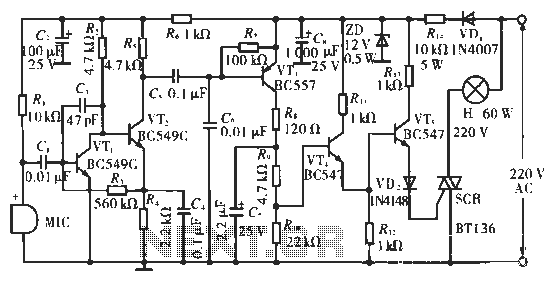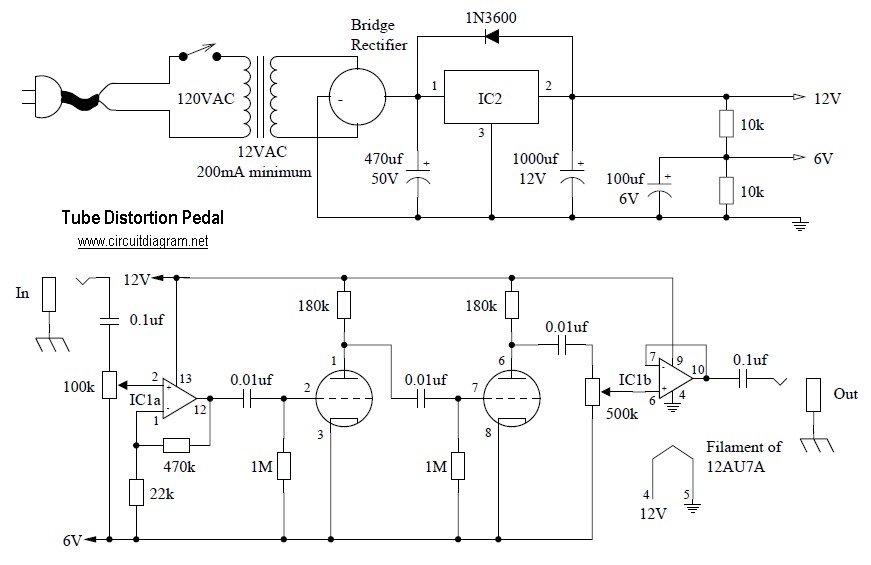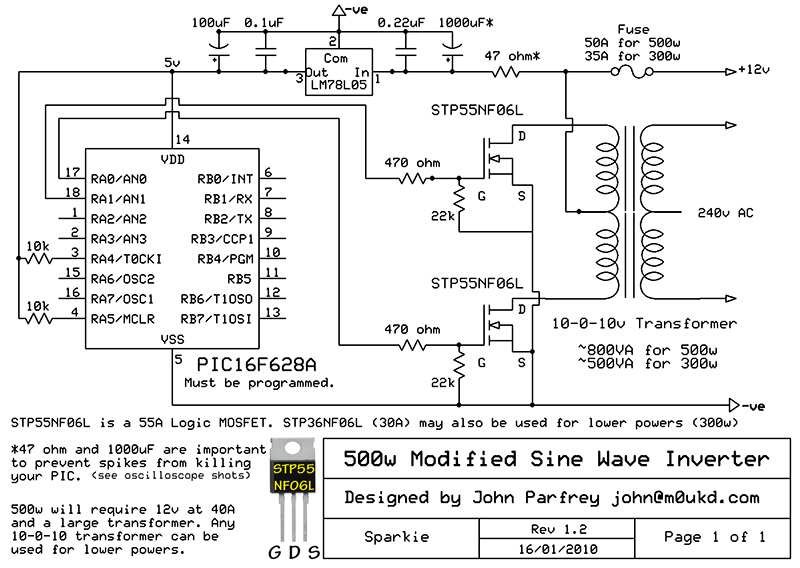
Breaker control signal circuit manually
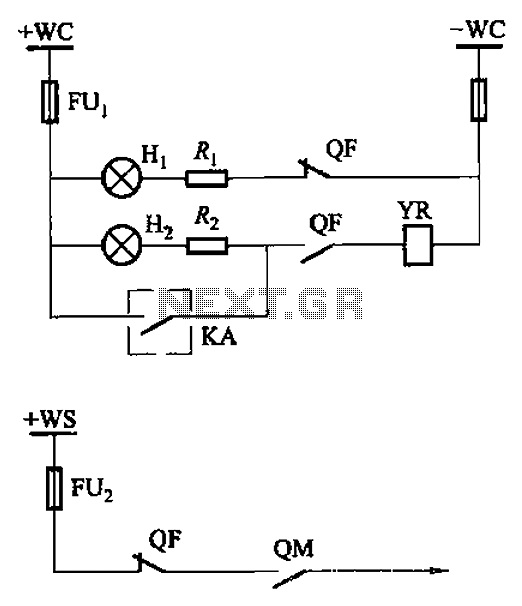
The CS2 type is a manually operated breaker mechanism commonly utilized for AC power operation and manual control signal circuits, as depicted in Figure 6-68. The circuit includes various components: wc for small signal bus control, QF for auxiliary contacts of the circuit breaker, YR for the temporary trip coil, QM for auxiliary contacts of the manual operating mechanism, Hi as a green indicator light, H2 as a red indicator, and Ri and R2 as current limiting resistors.
The CS2 type manually operated breaker mechanism is an essential component in electrical systems that require reliable operation and control. This mechanism is designed to facilitate the manual interruption and restoration of electrical circuits, ensuring safety and functionality in various applications. The AC power operation allows for integration into alternating current systems, making it versatile for different environments.
The control signal circuit, as illustrated in Figure 6-68, incorporates several key elements that work together to manage the operation of the breaker. The 'wc' component serves as the control signal for a small signal bus, enabling communication and control over the circuit's operation. The auxiliary contacts, represented by 'QF', play a crucial role in providing feedback and ensuring the proper functioning of the circuit breaker during operation.
The 'YR' component refers to a temporary trip coil, which is activated under specific conditions to interrupt the circuit, protecting against overloads or faults. This feature is vital for maintaining system integrity and preventing damage to connected equipment. The 'QM' component consists of auxiliary contacts associated with the manual operating mechanism, allowing operators to manually engage or disengage the breaker as needed.
Indicator lights are also integral to the operation of the CS2 mechanism. The 'Hi' green indicator light signals that the system is in a normal operational state, while the 'H2' red indicator light serves as a warning that the circuit is in a trip condition or requires attention. These visual indicators provide immediate feedback to operators regarding the status of the breaker.
Furthermore, the circuit employs current limiting resistors, denoted as 'Ri' and 'R2', which are essential for managing the flow of electrical current within the circuit. These resistors help prevent excessive current that could lead to overheating or failure of components, thereby enhancing the overall reliability of the system.
In summary, the CS2 type manually operated breaker mechanism is a sophisticated assembly designed for effective control and protection of AC power systems, featuring a range of components that ensure safe operation and clear communication of circuit status. The integration of auxiliary contacts, trip coils, indicator lights, and current limiting resistors contributes to its robust functionality in various electrical applications. Breaker manually operated mechanism widely used type CS2. AC power operation manual operation control signal circuit shown in Figure 6-68. Figure, wc for the control of small b uses; ws small signal bus; QF circuit breaker auxiliary contacts; YR Temporarily trip coil (trip); QM manual operating mechanism auxiliary contacts; Hi green indicator light; H2 is red indicates can; Ri, R2 current limiting resistor.
The CS2 type manually operated breaker mechanism is an essential component in electrical systems that require reliable operation and control. This mechanism is designed to facilitate the manual interruption and restoration of electrical circuits, ensuring safety and functionality in various applications. The AC power operation allows for integration into alternating current systems, making it versatile for different environments.
The control signal circuit, as illustrated in Figure 6-68, incorporates several key elements that work together to manage the operation of the breaker. The 'wc' component serves as the control signal for a small signal bus, enabling communication and control over the circuit's operation. The auxiliary contacts, represented by 'QF', play a crucial role in providing feedback and ensuring the proper functioning of the circuit breaker during operation.
The 'YR' component refers to a temporary trip coil, which is activated under specific conditions to interrupt the circuit, protecting against overloads or faults. This feature is vital for maintaining system integrity and preventing damage to connected equipment. The 'QM' component consists of auxiliary contacts associated with the manual operating mechanism, allowing operators to manually engage or disengage the breaker as needed.
Indicator lights are also integral to the operation of the CS2 mechanism. The 'Hi' green indicator light signals that the system is in a normal operational state, while the 'H2' red indicator light serves as a warning that the circuit is in a trip condition or requires attention. These visual indicators provide immediate feedback to operators regarding the status of the breaker.
Furthermore, the circuit employs current limiting resistors, denoted as 'Ri' and 'R2', which are essential for managing the flow of electrical current within the circuit. These resistors help prevent excessive current that could lead to overheating or failure of components, thereby enhancing the overall reliability of the system.
In summary, the CS2 type manually operated breaker mechanism is a sophisticated assembly designed for effective control and protection of AC power systems, featuring a range of components that ensure safe operation and clear communication of circuit status. The integration of auxiliary contacts, trip coils, indicator lights, and current limiting resistors contributes to its robust functionality in various electrical applications. Breaker manually operated mechanism widely used type CS2. AC power operation manual operation control signal circuit shown in Figure 6-68. Figure, wc for the control of small b uses; ws small signal bus; QF circuit breaker auxiliary contacts; YR Temporarily trip coil (trip); QM manual operating mechanism auxiliary contacts; Hi green indicator light; H2 is red indicates can; Ri, R2 current limiting resistor.
